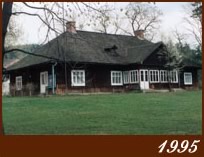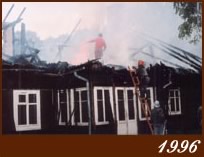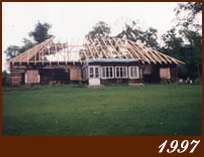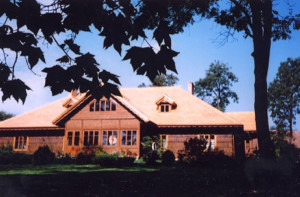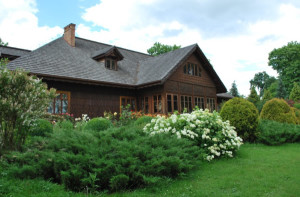History
The manor house in Trześniów was built in place of the former village aldermen residence in the early 19th century. Back then it posed the main element of the manor house separated from the grange with ponds and a park.
Rafał Kołłątaj (1750 – 1833), an older brother of Hugon and a younger sibling of Jan, was granted a title of Trześniów village alderman after getting married to Józefa Tarłowa, née Grabińska in 1772, the Sanok castellan. Both Kołłątaj brothers, Rafał and Jan, supported their brother, priest Hugon, in his innovative social and political activities. On behalf of his brother, priest Hugon, he dealt with various matters, which meant being considered as a member of Kuźnica Kołłątajowska. He was a member of The Gathering of Friends of the Government Constitution Act (Zgromadzenie Przyjaciół Konstytucji Rządowej). Several times he accompanied Tadeusz Kościuszko in his journeys from Italy to Poland, probably visiting his manor in Trześniów (Podkarpacie) on his way. His only child, a daughter, Maria, was named Wężykowa after her first husband. Her second spouse was Józef Sikorski.
In the late 19th century she bequeathed her manor in Trześniów to The Blind Institution (Zakład dla Ciemnych) in Lviv. The Sikorskich Lviv Foundation taking care of blind children existed until the end of the Second World War. In the years 1921 – 1947 the manor house in Trześniów was inhabited by Feliks and Zofia Sokulska, née Dukiet, with their son Stanisław and daughter Maria. Feliks Sokulski, on behalf of the Sikorski Foundation, administered the Trześniów estate. After the Second World War the manor house was used by state – owned folwarks (Państwowe Gospodarstwo Rolne) in Trześniów. In the late 70s and in the 80s of the last century the manor, grange and the park were utilized by Państwowy Ośrodek Hodowli Zarodowej. After the institution was closed down, the whole property was administered by Agricultural Real Estate of the State Treasury (Agencja Własności Skarbu Państwa). On 28 August, 1996, due to the fire, the roof of the manor and porch were entirely destroyed. Despite such a severe damage of the historic monument, we decided to buy the whole property for the living purposes. The reconstruction of the destroyed part of the manor together with the adaptation of the interiors for living purposes was conducted in the years 1997 – 2002.

